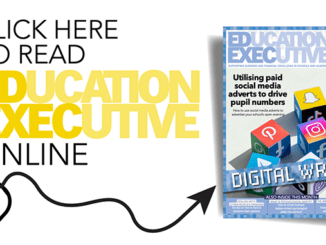
The use of edtech in schools is rapidly increasing, but with so many options and providers, how can you ensure you are sourcing the best edtech for your school?
Edtech can be a confusing area to navigate. With so many flash gadgets and new innovations, it can be hard to decide which ones are actually going to be effective in your school. It’s easy to be tempted to buy the latest technology, with all the bells and whistles but, sometimes, these gadgets aren’t always the best investment. So, how can you ensure you are making the best decisions when it comes to spending your precious pennies on tech?
Research, research, research
When it comes to making decisions about edtech purchases, SBMs can feel very alone; there aren’t many systems in place which can help to identify which products are most effective in achieving the learning outcomes you want.
This results in a lot of edtech being bought, but not being used effectively. In fact, one study https://www.glimpsek12.com/blog/schoolsoftwarespending found that two-thirds of software licences are never activated. Budgets are precious, and money being wasted in this way is avoidable if proper research is carried out before purchasing decisions are made.
Although research takes time and resources, it will be less costly than investing in edtech which is never used, or is ineffective in achieving its proposed goals. To make sure you lower the risk of buying an ineffective product, it is important that the time spent on research is proportional to the time that will be spent by students using the product. So, what should your research consist of?
Find existing evidence
Many pieces of edtech have already been studied to test their effectiveness; this means you do not have to be a guinea pig but, instead, you can be a well-researched, confident buyer. To find research, evaluation and impact studies, research bases such as Google Scholar, ResearchGate and JSTOR are good places to start. Other websites, such as evidenceforessa.org, Best Evidence Encyclopedia http://www.bestevidence.org/aboutbee.htm and the What Works Clearinghouse https://ies.ed.gov/ncee/wwc/ also provide summaries of research on educational interventions.
Once you find research, it is imperative to make sure it is reliable. To assess the reliability of the research, there are five questions you should be asking yourself whilst reading it.
Does the study design provide a compelling comparison group?
A comparison group represents what would have happened without the use of the edtech; the difference between the controlled and comparison groups shows the impact the edtech had. As a result, studies which feature a comparison group are often strongest at showing the impact of the technology.
How does the study measure success?
Looking for indicators of implementation might provide information about the value of an intervention, such as how many teachers attended the professional development, how many teachers and students used the intervention in their classrooms and for how long during the school year.
Who did the research?
It almost goes without saying that studies paid for by the company producing the edtech may not be totally objective. You should always try to search for studies which have the highest level of objectivity, as they are likely to be more reliable.
How much learning happened during the study?
The research should describe the size of the effect and explain whether it is meaningful – for example, describing how much students, typically, grow on the measure over a year and how the growth from this intervention is greater than would have happened otherwise, or how much they have grown from similar kinds of interventions. Moreover, make sure the outcome—test scores, absence rates, etc.—is something you care about.
Who participated in the study?
The larger the number of pupils who took part in a study, the more representative the outcomes will be. It is also a good idea to find a study which is most reflective of your students. Using a study which used a sample of infant school children if you are thinking of buying edtech for secondary school children is not going to be as helpful as one that mirrors your school’s demographic.
You wouldn’t buy a new car without doing your research on the person selling it, how effective it is and how appropriate it is for your needs. Edtech also depreciates in value very quickly, like a car, so knowing where to invest your money is key.
Think about buying edtech as you would buying a car. You wouldn’t drive a car off the forecourt blindly, so make sure you purchase edtech with your eyes wide open.




Be the first to comment